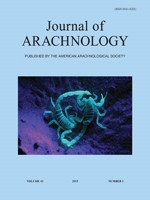Many animals build homes to which they return after excursions. However, the sensory and motor mechanisms that animals use to home are poorly understood. Sand scorpions, including Paruroctonus utahensis (Williams 1968), make burrows from which they emerge to hunt at night. These scorpions spend most of their surface time within about a meter of their burrow. Our goal was to create a laboratory environment conducive to scorpion homing behavior. Specifically, our objectives were to verify in-lab burrow use similar to field observations and to characterize scorpion movements in these artificial environments. Tests occurred in circular, sand-filled arenas (65 cm diam); in the center of each was a shelter (a small jar lid with openings for the scorpions to enter). We used IR cameras to film all trials from above in a room with a 14:10 hour light-dark cycle. Animals were tested over a 7-day period for their tendency to establish and return to their shelters on a normal day/night cycle. Time-in-shelter percentages showed significant evidence of shelter use, consistent with their normal burrow use in the field. In the second experiment, we wrote a MATLAB program to automatically track several hours of videotaped scorpion nocturnal movements. Animals spent most of their time along the arena walls but made intermittent forays across the arena center. When they returned to their shelters, their movements appeared to be direct and deliberate. This behavioral set-up will be useful in future attempts to deduce the sensory information these animals use to return to their burrows.
How to translate text using browser tools
1 April 2015
Determination of in-lab site fidelity and movement patterns of Paruroctonus utahensis (Scorpiones: Vaejovidae)
Jay E. Vinnedge,
Douglas D. Gaffin
ACCESS THE FULL ARTICLE

The Journal of Arachnology
Vol. 43 • No. 1
April 2015
Vol. 43 • No. 1
April 2015
behavior
homing
navigation
Scorpion
sensory




